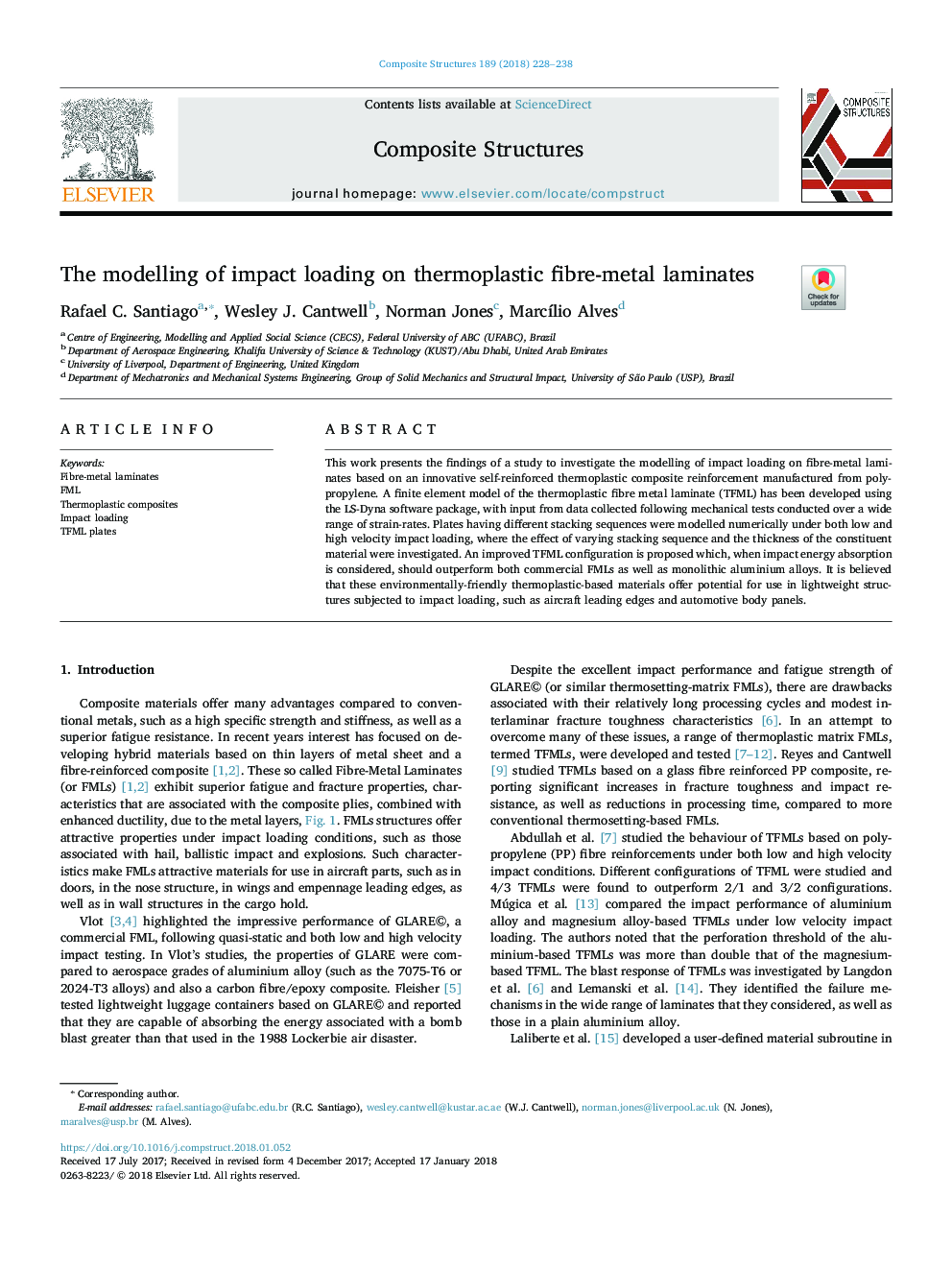| Article ID | Journal | Published Year | Pages | File Type |
|---|---|---|---|---|
| 6703924 | Composite Structures | 2018 | 11 Pages |
Abstract
This work presents the findings of a study to investigate the modelling of impact loading on fibre-metal laminates based on an innovative self-reinforced thermoplastic composite reinforcement manufactured from polypropylene. A finite element model of the thermoplastic fibre metal laminate (TFML) has been developed using the LS-Dyna software package, with input from data collected following mechanical tests conducted over a wide range of strain-rates. Plates having different stacking sequences were modelled numerically under both low and high velocity impact loading, where the effect of varying stacking sequence and the thickness of the constituent material were investigated. An improved TFML configuration is proposed which, when impact energy absorption is considered, should outperform both commercial FMLs as well as monolithic aluminium alloys. It is believed that these environmentally-friendly thermoplastic-based materials offer potential for use in lightweight structures subjected to impact loading, such as aircraft leading edges and automotive body panels.
Related Topics
Physical Sciences and Engineering
Engineering
Civil and Structural Engineering
Authors
Rafael C. Santiago, Wesley J. Cantwell, Norman Jones, MarcÃlio Alves,
